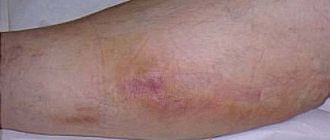Device of mechanical tonometers
A mechanical tonometer consists of: a shoulder cuff, a bulb (air pump), a stethoscope, and a pressure gauge.
Depending on the manufacturer and model, tonometers can have different configurations and accessories: the tonometer can be supplied with a stethoscope built into the cuff, purchased separately or without it at all. Also, for ease of use, some tonometers have a pressure gauge combined with a bulb.
Mechanical tonometer CS Medica CS-107 Mechanical tonometer Little Doctor LD-70 Mechanical shock-resistant tonometer Little Doctor Shock Protection LD-91 Mechanical tonometer Microlife BP AG1-40
Let us consider the device of a mechanical tonometer in more detail:
Cuff
Mechanical blood pressure monitors boast a large range of cuff sizes (cuffs are available for babies, children, teenagers, and adults). Large sizes are suitable for measuring blood pressure not only on the shoulder, but also on the legs.
Pear (supercharger)
It has two valves - a check valve and a dump valve (see photo below). The principle of operation is extremely simple: when you press the bulb, air is pumped into the cuff, while the check valve prevents the air from escaping. A relief valve is provided for smooth air release.
Stethoscope
Designed to listen to heart sounds while measuring blood pressure.
Pressure gauge
Displays the result of blood pressure measurement. When choosing a tonometer, pay attention to the pressure gauge; it is best that it has a large display and a metal case.
Read in this article:
- Design and principle of operation of a mechanical tonometer
- Automatic blood pressure monitor device
- How does an automatic blood pressure monitor measure blood pressure?
- Features of wrist tonometers and semi-automatic devices
- How to choose the right tonometer?
- Convenient and accurate instruments for measuring pressure
Blood pressure is an important indicator of the functioning of the circulatory system, the heart and the entire body as a whole. To measure this parameter, instruments called tonometers are used. They differ in the principle of operation and functionality, in design and method of use. To choose the right device for home use, it is worth understanding how the tonometer works and how it is designed.
Advantages and disadvantages
Advantages of mechanical tonometers:
- Small price.
- High accuracy.
- They fail less often.
- All components are interchangeable.
- Does not depend on power sources.
- Light weight and compact.
Also, mechanical tonometers have one significant drawback - to use a mechanical tonometer, you must have good hearing and a certain skill in measuring blood pressure, otherwise the whole procedure of measuring your own pressure will not make any sense. However, this problem can be solved if you ask a knowledgeable person to measure your blood pressure, and at the same time he will show you how to do it correctly.
Design and principle of operation of a mechanical tonometer
Tonometers are either mechanical or automatic. There are also semi-automatic devices that can be classified into the second group. Each such device has its own design and mechanism of action.
A mechanical tonometer works using the auscultatory method of measuring pressure. This method of recording indicators was invented at the beginning of the 20th century and is still successfully used to this day. The design of the tonometer has not changed over the past decades; it consists of:
- Cuffs that fit on the shoulder between the elbow and shoulder joints;
- Supercharger - a pump that pumps air into the cuff;
- A pressure gauge showing the degree of air pressure in the cuff;
- A phonendoscope, with the help of which heart sounds are heard (they are also called Korotkoff sounds).
The operating principle of this type of tonometer involves detecting noise by ear. The cuff is placed on the arm and air is pumped into it until the artery is completely clamped. After increasing the pressure by another 30-40 mm Hg. the air is gradually released. This leads to the opening of the artery and the resumption of blood flow, which is accompanied by a certain sound. At the moment such noise appears, a digital indicator is recorded on the pressure gauge; it will be the value of the upper (systolic) pressure. When blood pressure decreases, a characteristic sound also appears, which is how the lower (diastolic) pressure is determined.
Automatic blood pressure monitor device
Automatic devices operate differently. To understand how an electronic tonometer works, you need to have an understanding of its design and the oscillometric measurement method.
The design of the automatic device includes:
- An electronic board with a display installed on it - it is responsible for controlling the buttons and pressure sensor;
- Pump for pumping air into the cuff;
- A sensor that records the level of pressure in the cuff. It also reads the pulse, upper and lower pressure, determines the presence of arrhythmia, i.e. heart rhythm disturbances;
- A valve that allows air to slowly deflate from the cuff when measuring pressure;
- Valve for quick air release.
Understanding what a tonometer consists of, it is easier to understand the mechanism of its operation and the rules of use.
How does an automatic blood pressure monitor measure blood pressure?
The operation of the automatic tonometer is structured as follows:
- The cuff is fixed on the shoulder (in some models - on the wrist);
- Pressing the button starts the compressor, which begins to fill the cuff with air;
- A special sensor installed on the electronic board monitors the amount of air pressure;
- After reaching the upper value, the pump stops pumping air;
- The air is gradually released due to the corresponding valve;
- At the same time, the pressure sensor measures the heart rate;
- The moment of recording the most powerful blows is recorded as the upper blood pressure indicator;
- The moment the shock subsides is determined by the sensor as the lower pressure.
Then the device finally bleeds the air from the cuff and displays the measurement results on the display.
In other words, measuring blood pressure using the oscillometric method is the recording of fluctuations in air pressure in the tonometer cuff. These fluctuations (oscillations) appear due to the influence of blood flow in the compressed area of the artery. Using an electronic system, the indicators are converted into electrical signals, and then an automatic system analyzes them and displays them in digital form.
Automatic tonometers operate on batteries, accumulators or mains. Some models combine several power options. It is worth considering that the batteries last for a relatively short time. Rechargeable batteries are a better option because they can be recharged. The ability to operate on mains power may also be useful for home use. Such devices include a network cable.
Blood pressure meter: operating instructions
Regardless of which device measures pressure, automatic or mechanical, a tonometer on the wrist or shoulder, it is necessary to prepare for the procedure, take a comfortable position and correctly position the cuff.
If blood pressure monitoring is carried out, you need to prepare in advance. An hour before measuring blood pressure, you should not drink strong tea or coffee, or engage in sports or other active physical activity. If a person was under the scorching rays of the sun or took a hot shower or bath before measuring blood pressure, then this can change the indicators, so such circumstances should be taken into account.
A few minutes before measuring your blood pressure, you should sit quietly; if you are nervous, try to relax. The air in the room should not be too cold, otherwise the pressure readings may be distorted due to vascular spasms.
Questions often arise as to whether it is best to use a blood pressure monitor while lying down or sitting down. Medical professionals recommend measuring blood pressure while sitting, so the indicators are calculated most accurately. But in some cases, for example, when the patient cannot sit, it is permissible to take measurements in a lying position.
The patient needs to sit comfortably in a chair, leaning on the back. The left hand must be placed on the surface so that the shoulder is at the level of the heart. The pressure should be measured two or three times with an interval of five minutes.
Detailed measurement instructions:
- take a comfortable position;
- put a cuff on the shoulder; if the device is mechanical, then the phonendoscope should be located on the inside of the shoulder in the place where the artery passes;
- secure the cuff with Velcro;
- using a rubber bulb, fill the cuff with air to the level that can be exceeded (the valve must be screwed tightly);
- slowly unscrew the valve until the arrow begins to move in the opposite direction;
- listen to the pulse through a phonendoscope and note the indicators of upper and lower blood pressure (for mechanical models).
Automatic models are easier to use; you just need to put on the cuff, turn on the device and evaluate the indicators that appear on the display. For a semi-automatic device, you need to fill the cuff with air, the indicators are also evaluated automatically. The pulse tonometer is an automatic model, so it does not require special skills.
For hypertensive patients, it is recommended to use only those models that measure blood pressure with a brachial cuff. It is advisable to take measurements at least once a day, at the same time.
Features of wrist tonometers and semi-automatic devices
To measure blood pressure, you can use a tonometer that is worn on your wrist. They work in a similar way to conventional automatic tonometers, determining pressure and pulse values and displaying them on the display in the form of numbers. The only caveat is that readings are taken from the radial artery, where the amplitude of the pulse wave is less.
The difference between semi-automatic devices is the manual control of the pump. The person must pump up the air himself, and after reaching the desired pressure, the device automatically releases the pressure, releasing the air.
This difference is also associated with a slightly different design of the device. The design consists of a body with electronic filling, to which a cuff is attached, like an electronic blood pressure monitor. But there is also a mechanical bulb for pumping air, like mechanical models.
The cuff is fixed on the arm, and air is pumped into it using a bulb. Then you need to open the small valve on the bulb to gradually release the air. The electronic unit contains sensors that record the necessary sounds, so a phonendoscope is not required.
Popular brands
- Omron M2. Japanese electric blood pressure meter with an expanded range of tasks. The fan-shaped universal cuff eliminates pain and discomfort during vessel compression. The M3 Expert tonometer measures blood pressure, heart rate and has a built-in arrhythmia indicator. The memory slot records 30 results.
- AND UA-669. The device displays pressure measurement results according to the WHO risk classification. The model is equipped with a memory slot for 90 cells, a function for averaging three-time measurements and an arrhythmia indicator. The device has a bright and stylish design.
- Medisana. Tonometers made in Germany. Wrist-mounted computers have become popular. The device has a voice message function, therefore it is recommended for use by people with vision problems. Can be used as a watch.
- Microlife, Dr. Frei and Rossmax. The best Swiss brands. The devices are synchronized with the owner’s smartphones and transfer the results to the PC. A special application keeps a diary where up to 99 measurements are stored.
- Vega. Chinese blood pressure monitors, which are popular due to their affordable price. The battery indicator reminds you of the need to replace batteries in a timely manner. Options include an audible alert and an arrhythmia indicator.
- Nissei. Bracelet on the wrist. Thanks to the unique shape of the cuff, pressure is measured in 2 arteries at once, which significantly increases the accuracy of the readings. Compact dimensions allow you to take the device with you and always have a meter at hand if necessary.
How to choose the right tonometer?
You should choose a tonometer taking into account its design features. For example, to use a mechanical device, good hearing is required to distinguish tones, and vision to correctly evaluate the readings of the pressure gauge. It is quite difficult to measure your own pressure with such a device; you usually need the help of another person.
But devices of this type are inexpensive and do not require a power source. They are often used by employees of medical institutions who have quite a lot of experience working with such devices.
Automatic blood pressure monitors are convenient for measuring blood pressure at home. All you have to do is put the cuff on correctly and press the button, and the device will do the rest. In addition, many automatic blood pressure monitors are equipped with many useful functions:
- Store the obtained indicators in memory for one or more people;
- Calculate average pressure values for a certain period;
- Compare pressure with standards and report deviations;
- Display time and date;
- Automatically turns off when inactive;
- Shows battery discharge level. There are models of tonometers with backlit screens and large numbers to make it easier for people with low vision to measure blood pressure. Some devices have touch buttons for ease of use.
It is worth paying attention to models that synchronize with applications for mobile devices and computer programs. Such tonometers transmit data via USB, which makes it possible to analyze pressure dynamics, provide this information to the doctor during a consultation, and monitor the influence of various factors on the functioning of the heart and blood vessels.
How does posture affect blood pressure readings and which one should you take?
To accurately determine blood pressure, you need to achieve maximum muscle relaxation. Therefore, it is recommended to sit on a chair or chair with a backrest for several minutes before taking measurements. In this case, you cannot cross or cross your legs over one another, as this may result in the arteries being compressed. And this will already lead to a change in indicators.
The hands should not be in a hanging position; they should be placed on the table so that they are parallel to the heart. You should also avoid squeezing with clothing. It is recommended to sit in this position for ten minutes before the procedure, without talking to anyone, without watching TV or making active movements. Otherwise, the indicators may not be true. It is not prohibited to measure blood pressure in a supine position, but all of the above rules must be followed.
Correct body position when measuring blood pressure
For the accuracy of the indicators, you need to find out on which hand the test should take place. To determine this, you need to measure the pressure on both hands about ten times with intervals of two to three minutes. After the indicators from the left and right hands are recorded in two columns, analysis is performed. The pressure should be measured on the arm on which the result is higher.
Differing indicators on both hands are not considered a deviation, and this is due to the anatomical feature of the functioning of the heart muscle. If the result is the same or differs, but only slightly, then the test should be carried out on the right hand, and for left-handed people - on the left.
The tonometer cuff should be located on the bare part of the arm, two centimeters above the elbow. If it is located above the heart, the measurement result will be underestimated, and if lower, it will be overestimated.
Inaccuracy can be decisive, since if you move a couple of centimeters in either direction from the level of the heart muscle, you can get readings two millimeters of mercury more or less. In this case, the cuff must be tightened evenly so that it covers the entire arm and is secured with Velcro. The needle on the pressure gauge must be at the zero position before starting the procedure.
Correct cuff position









